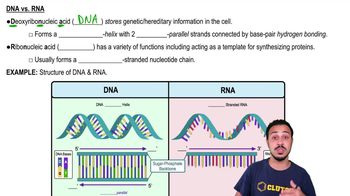Multiple Choice
What catalyzes the linkage between ribonucleotides to form RNA during gene expression?
1438
views
 Verified step by step guidance
Verified step by step guidance Verified video answer for a similar problem:
Verified video answer for a similar problem:



 5:51m
5:51mMaster Introduction to Transcription with a bite sized video explanation from Jason
Start learning